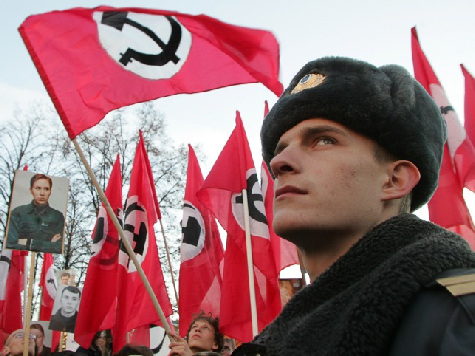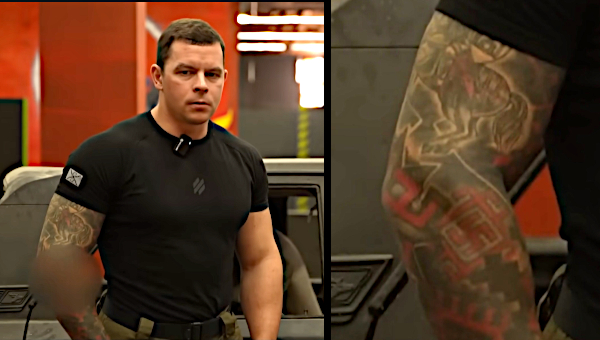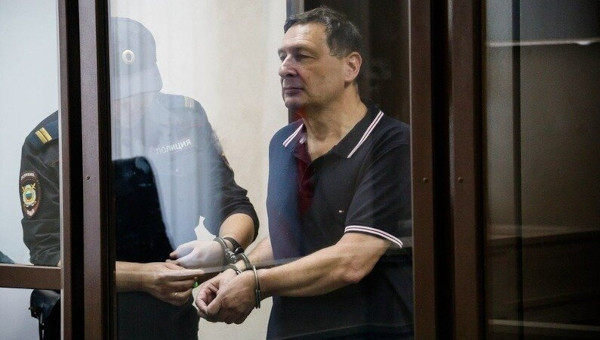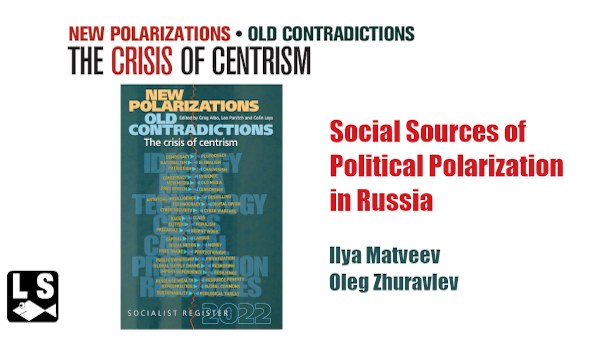The current crisis in Ukraine has, among other things, highlighted the issue of nationalism in the former Soviet republics, and in particular extreme right nationalism. The politics of the Euromaidan movement, which toppled President Viktor Yanukovych are overwhelmingly those of Ukrainian nationalism in various forms, and far right organizations such as the Right Sector and the Svoboda Party played significant roles in the movement and in the subsequent interim government, as well as currently in volunteer battalions fighting in the Donbas region. The current government in Kiev is supported by the EU and USA. Many on the left internationally, including some on the left in Ukraine, consequently consider the Kiev government to be a ‘fascist junta,’ beholden to if not directly controlled by western imperialism. Meanwhile, the separatist movement in the south east of Ukraine, which grew out of the pro-Yanukovych anti-maidan movement, is essentially a mirror image, dominated by Russian nationalism, and with Russian far right organizations and individuals involved in various ways, and is supported, certainly diplomatically and politically, if not militarily, by the Russian government.
 While those on the left who consider Kiev to have a fascist government depict the separatist movement as an ‘antifascist’ resistance, there are others who consequently believe that in fact the separatists themselves constitute a fascist, pro-Russian imperialist movement. It is my belief that both positions are extremely simplistic, and merely play into the great game being played by rival Western and Russian imperialisms in Ukraine. The situation in Ukraine is much more complicated, and neither side can be unequivocally characterized as being entirely ‘fascist,’ ‘anti-fascist,’ ‘imperialist’ or whatever. The purpose of this particular article is however not to analyze the separatist movement as a whole, but to attempt to examine the Russian far right and the extent of its involvement in the civil war currently raging in south eastern Ukraine. Much of the information here is from the Sova Centre, a Moscow-based think tank, which monitors extreme right activity in Russia. Where links are not provided, information can be found in English as well as Russian on this site.
While those on the left who consider Kiev to have a fascist government depict the separatist movement as an ‘antifascist’ resistance, there are others who consequently believe that in fact the separatists themselves constitute a fascist, pro-Russian imperialist movement. It is my belief that both positions are extremely simplistic, and merely play into the great game being played by rival Western and Russian imperialisms in Ukraine. The situation in Ukraine is much more complicated, and neither side can be unequivocally characterized as being entirely ‘fascist,’ ‘anti-fascist,’ ‘imperialist’ or whatever. The purpose of this particular article is however not to analyze the separatist movement as a whole, but to attempt to examine the Russian far right and the extent of its involvement in the civil war currently raging in south eastern Ukraine. Much of the information here is from the Sova Centre, a Moscow-based think tank, which monitors extreme right activity in Russia. Where links are not provided, information can be found in English as well as Russian on this site.
Far Right: Three Main Tendencies
The far right in Russia comprises a number of different ideological strands, including neo-Nazis who openly profess biological racism as their ideology, as well as national Bolsheviks, ultra-conservatives, Eurasianists, orthodox activists and racist football hooligan groups. Generally there are three main tendencies: the aforementioned neo-Nazi racists, who often also have neo-pagan, anti-Christian ideas, Eurasianists, who include National Bolsheviks, and “Impertsi”, ultra-conservatives who want to resurrect the Russian Empire or even the monarchy in some way, tend to profess support for Russian Orthodox Christianity, and for whom biological racism is not so important. The neo-Nazis tend to consider themselves in firm opposition to the Putin government, while those supporting the other tendencies tend to at least critically support Putin to varying degrees. However, there can often be some overlap and support or opposition to Putin is not necessarily a given. There are a plethora of different organizations, which are constantly changing and splitting. It is difficult to know how many people are involved in the far right in Russia, but judging by the numbers attending public actions in the recent past, it certainly numbers in the tens of thousands. Some are members of explicit organizations, others are involved in more informal autonomous nationalist networks, which organize activity through sites such as Vkontakte (a Russian social network similar to Facebook), but don’t constitute formal organizations or parties as such. Their activities range from legal propaganda, through public actions such as pickets and marches, to criminal activities such as vandalism, arson, assault and even murder of ethnic minorities, LGBT people and political opponents, as well as terrorism. For example, every November there is the “Russian March,” a nationalist demonstration, which is attended by a whole range of nationalist and far right groups. It takes place in several cities across Russia, and in 2013 attracted several thousand people in Moscow alone.
As is well known, the Russian Federation covers a vast territory, and it’s population includes a large number of different nationalities and ethnicities in addition to the majority Russian population. The USSR, which theoretically opposed racism, national chauvinism and fascism, is fondly remembered by many, and the traumatic struggle against the horrific Nazi invasion, in which at least 20 million Soviet citizens died, is still a visceral part of the collective consciousness, with memorials and reminders almost everywhere you look. The Victory Day holiday on 9 May is one of the most popular holidays of the year among all age groups. Consequently the idea of fascism is anathema to most people, and explicit racism is very unpopular. The far right therefore only represents a small segment of Russian society, as with most other countries in Europe. Recent months have seen a drop in racist sentiment and support for far right ideas, due to the crisis in Ukraine and the government propaganda campaign depicting the separatist struggle in the Donbas as an anti-fascist resistance.
Nevertheless, there is a high level of anti-immigrant sentiment in society, directed mainly against guest workers from Central Asia as well as people from the North Caucasus regions such as Chechnya (which is technically part of the Russian Federation, although non-Russians from there are still often considered ‘immigrants’). Also, what is considered by many to constitute racism can differ considerably from what we in the west are used to. For example, political memes shared on social networks depicting Barak Obama and bananas are often not controversial. The opposition leader Alexei Navalny, who many consider to be a liberal, has in the past advocated cooperation with nationalists in the struggle against the Kremlin, has participated in the annual far right “Russian March” and in 2013 ran in the elections for the Moscow mayor, had among his policies increased restrictions on immigration from Central Asian republics. One Russian contact considers him to be analogous to Nigel Farage (leader of the UK Independence Party). All of the parties in Russia’s parliament, the State Duma, are considered to be nationalist in their own way – only one member of the Duma, Ilya Ponomaryev of the “Just Russia” party (the centre-left grouping in the Duma), voted against the annexation of Crimea.
Nationalist Splits
The nationalist groups, which became notorious in the 1990s have largely lost their influence, suffered splits, been banned or evolved into new organizations. Russian National Unity (Russkoe Natsionalnoe Edinstvo – RNE), whose logo was a swastika with dagger points coming out of the corners, was one of the most famous of these. Its fuhrer, Alexander Barkashov, split in the early 2000s, and has largely been inactive in recent years, although recently it has had some involvement in the pro-Russian movement in the Donbas. Eduard Limonov’s National Bolshevik Party (NBP) also split, and then was banned outright in the mid-2000s. Limonov went on to be a leading member of Other Russia, a broad liberal opposition movement to Putin’s government. While he remains unequivocally opposed to the Putin Regime, Limonov appears to have drifted back toward more nationalist positions, forming a new party similar to the NBP and confusingly called “The Other Russia,” and supported the annexation of Crimea as well as the separatists in Ukraine. To this extent he and his supporters can be considered to be state nationalists, advocates of a strong Russian state which ideally would reclaim most if not all territory formerly ruled by Russia, rather than neo-Nazi racists.
Nationalist groups today include the National Socialist Society (NSO), Slavic Union (Slavyanski Soyuz – SS), the Movement Against Illegal Immigration (Dvizhenie Protiv Nyelegalnoi Immigratsii – DPNI), and Russian Way (Russki Obraz). The NSO and SS are openly neo-Nazi organizations, the DPNI ostensibly focuses on the issue of illegal immigration, but is essentially a neo-Nazi outfit (its logo features a stylized swastika). Such groups are either hostile to religion in general, or profess some kind of neo-pagan ideology, and tend to be hostile to the current Russian government, wishing to create an “ethnically pure” state which brings together the Slavic people. Sobor Russkovo Naroda (SRN – Council of the Russian People) is part of the ‘Impertsi’ movement.
The relationship between the far right and the state is somewhat schizophrenic. On the one hand, far right activists are often jailed for their criminal activities, and several organizations have been banned under anti-extremism laws. Many consider themselves to be opponents of the current regime, and have taken an active part in opposition movements and protests for years. However, large sections of the hard right are loyal to the Kremlin, for example Vladimir Zhirinovsky’s ultranationalist (and erroneously named) Liberal Democratic Party of Russia (LDPR). Indeed, the nationalism of the government and mainstream parties, while usually not as extreme as the outright Nazi groups, and careful to stress the multiethnic nature of the Russian Federation, could potentially provide fertile ground for fascist ideas. Furthermore, one prominent member of the government, Deputy Prime Minister Dmitry Rogozin has for many years been associated with the far right, previously a member of the nationalist “Rodina” (Motherland) party, and a founding member of the more recent “Great Russia” Party, which also includes the DPNI. He has also been on the organizing committee of the Russian March. Furthermore, the ultranationalist Eurasianist philosopher, Alexander Dugin, a strong supporter of the Donbas separatists, has been, at least until recently, close to Putin’s circle and is influential among ruling circles in Russia. For Dugin’s ideas on Eurasianism, a lengthy interview with the liberal Russian journalist Vladimir Pozner (with English subtitles) can be found on youtube.
Much has been made of the presence of fascists and extreme nationalists in the Maidan protests in Kiev, and the interim government, which was formed after then-president Yanukovych fled the country. Kremlin propaganda routinely describes the Kiev government as a “fascist junta,” and consequently the self-proclaimed Donetsk and Luhansk Peoples’ Republics as an anti-fascist resistance. The leftist organization “Borotba” unequivocally opposed the Maidan movement, and supports the DPR and LPR, albeit with varying levels of criticism. The original anti-maidan protests, which preceded the armed uprising in the east were often to protect Lenin statues in their respective towns and cities from perceived threats of demolition from Ukrainian Right Sector fascists (Lenin statues in many places in the west of Ukraine were pulled down during the Maidan protests, most famously in central Kiev). The memory of the fight against Nazi invasion, and nostalgia for the Soviet Union, are often invoked, with various types of Soviet flags and imagery seen at demonstrations.
However, this apparent leftist, anti-fascist content of the separatist struggle is overshadowed by the overwhelming prominence of Russian nationalism. The flags of the DPR and LPR feature imperial Russian eagles, and the leadership is mainly composed of supporters of Russian nationalism, including, until recently, citizens of the Russian Federation. Much of the rhetoric of the pro-Russian struggle speaks of recreating Novorossiya, the name of the former tsarist era province, which encompassed more or less the territory stretching from Luhansk oblast in the east to Odessa oblast in the west bordering Moldova and Rumania. Indeed the pro-Russian politician Oleg Tsarev recently unveiled the flag of the recently proclaimed Novorossiya Republic: it uses the same black, gold and white colors of the imperial Romanov flag, which was also used by reactionary black hundred anti-semites at the beginning of the twentieth century, and is used by Russian ultra nationalists and racist football hooligans in Russia today. Strangely the leftist Russian commentator, Boris Kagarlitsky, writes of Novorossiya without any apparent irony.
The crisis in Ukraine has affected the Russian far right greatly, resulting in a degree of realignment as well as deepening pre-existing splits between nationalist supporters and opponents of Putin and the political system he represents. The neo-Nazi groups have often sided with the Ukrainian government, in particular the far right elements, stressing slavic unity in the face of an anti-slavic government (Putin’s). Indeed one prominent individual publicly went to Kiev to join the National Guard, and no doubt there are more fighting in the Donbas. Others have simply gone silent and scaled back their activities: while the atmosphere inside Russia is characterized by a massively increased level of nationalism, it is combined with antifascist rhetoric, which is not conducive to racist neo-Nazism. The rest can be described as belonging to the impertsi camp, who support or are even actively taking part in the Donbas separatist movement, including the two factions of Russian National Unity, Limonov’s Other Russia party, and the Russian Orthodox Army. Alexander Barkashev is reported to have been directly involved in advising the separatists during the run-up to the May referendum on independence, and there are fighters from his faction of RNE (this one sporting a version of the Orthodox crucifix instead of the swastika as its logo).
It is difficult to tell for sure the precise numbers of fascist and far right fighters involved in the separatist militias, or even the precise numbers of Russian as opposed to Ukrainian citizens involved. Undoubtedly large numbers of Russian citizens of various political persuasions have entered south east Ukraine in recent months. There is the Vostok battalion, comprised largely of Chechens loyal to the pro-Putin president Kadyrov, uncertain numbers of Cossacks such as the famous “Babai,” as well as people from such countries as Armenia, who consider themselves to be loyal to the USSR. What is certain is the leadership of the so-called “Novorossiya republic,” at least initially, was dominated by Russian citizens and pro-Russians associated with the far right.
One of the first leaders to come to prominence was the self-proclaimed people’s governor of Donetsk, Pavel Gubarev. One of the few Ukrainian citizens among the first separatist leaders, he was not well known in local politics until early 2014. Previously a member of the Ukrainian Progressive Socialist Party (a pro-Russian party with an ideology which blends neo-Stalinism with Eurasianism), previous to that he was a member of the RNE. Indeed he appears to have maintained contact with Barkashev as recently as May 2014, taking advice from him on how to conduct the referendum in Donetsk oblast. Alexander Borodai, until early August prime minister of the Donetsk People’s Republic and a Russian citizen, has for many years been associated with the far right journal “Zavtra” (tomorrow). Igor Girkin, the shadowy figure better known as “Strelkov” (The Shooter), and until recently minister of defence of the DPR, is thought to be a reactionary monarchist and also used to write for Zavtra.
As mentioned above, this article is not an attempt to analyze the Donbas separatist movement as a whole, as there is a range of political forces involved. The main fault line in Ukrainian politics has for a long time been along nationalist lines (Ukrainian vs. Russian), so inevitably nationalism on both sides of the conflict has come to the fore and been exacerbated since the eruption of the crisis in the country in November 2013. While in many quarters the separatist movement is seen as a strictly anti-fascist one, it is important to point out that it has many supporters among the far right in the region, in Russia and indeed in Europe as a whole. Moreover there are far right activists actively involved in the movement, whether as fighters, fulfilling non-military roles, or in leadership roles. While it would be unfair to call this movement fascist as such, the presence of the far right in such roles, as well as the Russian nationalist ideology, which seems to dominate it, raises serious questions about its antifascist credentials. •
This article first published by The Project: A Socialist Journal.




